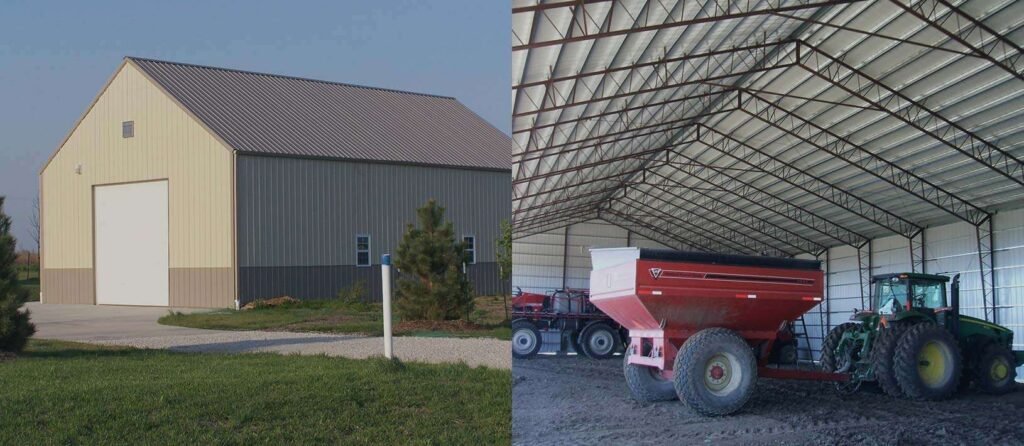
Agriculture has always depended on strong, reliable structures. Barns, equipment sheds, and storage facilities are the backbone of every farm operation. In today’s world, where efficiency and sustainability are critical, metal buildings are becoming the top choice for farmers looking to modernize their operations and reduce long-term costs.
From livestock shelters and crop storage to workshops and processing centers, steel buildings are reshaping how farmers build, maintain, and expand their agricultural spaces.
Strength That Withstands the Elements
Farm operations require structures that can handle constant exposure to harsh weather conditions. Metal buildings are engineered for strength, withstanding high winds, heavy snow, and intense sun.
Unlike wooden barns that can warp, rot, or become infested with termites, steel frames remain structurally sound for decades. This durability ensures that valuable equipment, feed, and livestock stay protected no matter the season.
Farmers in regions with unpredictable weather have especially benefited from the peace of mind that metal construction provides.
Efficient Storage for Equipment and Harvest
Every farmer knows how quickly equipment and supplies accumulate. Tractors, balers, plows, and seed storage all need space that is both accessible and protected. Metal buildings provide large, open interiors with no support columns, allowing easy movement of machinery.
For crop storage, insulation and ventilation options maintain stable temperatures and humidity levels. This helps protect grains, hay, and feed from moisture damage and mold growth.
Metal’s reflective properties also help keep interiors cooler, making it ideal for large-scale harvest storage and distribution.
Livestock Protection and Comfort
Livestock health depends on consistent shelter. Metal barns provide controlled environments that improve animal comfort and productivity. Ventilation systems can regulate airflow, while insulated walls help maintain stable temperatures during winter and summer.
Farmers raising cattle, poultry, or horses can easily install lighting, automated feeders, and climate control systems within metal structures. This not only improves animal welfare but also simplifies day-to-day management and cleaning.
The result is healthier animals, reduced losses, and a smoother workflow for caretakers.
Workshops and Processing Facilities
Beyond storage and shelter, many farms now use metal buildings as on-site workshops and small processing centers. These spaces make it easy to perform equipment maintenance, repair irrigation systems, or process goods such as dairy and produce.
Because steel buildings can be customized with plumbing, electricity, and interior partitions, they serve multiple functions. One building can operate as both a repair bay and a small distribution hub, helping farmers keep everything in one central location.
Sustainability Through Longevity and Efficiency
Modern agriculture is moving toward greener operations, and metal buildings play a key role in that transition. Steel is 100 percent recyclable and often contains recycled material, making it one of the most sustainable construction options available.
Insulated roofing panels and energy-efficient lighting systems reduce electricity usage, while metal’s reflective properties naturally moderate interior temperatures. Many farmers take sustainability a step further by adding solar panels to their roofs, creating self-powered agricultural operations that cut costs and carbon emissions.
Scalable and Adaptable for Growth
One of the greatest strengths of metal buildings is their flexibility. As farms expand or shift operations, structures can be extended or reconfigured with minimal effort.
A small hay shed can later become a full equipment warehouse. A livestock barn can evolve into a feed storage facility. This adaptability allows farms to grow at their own pace without tearing down and starting over.
Smart Technology Integration
As precision farming and automation become the norm, metal buildings easily support new technology. Farmers can install smart ventilation systems, temperature sensors, and security cameras that connect to phones or computers.
These systems monitor everything from air quality to feed inventory, ensuring that daily operations stay efficient and responsive. Metal structures provide the wiring flexibility and space required to integrate these modern farming tools seamlessly.
Conclusion
Agriculture is evolving, and metal buildings in Folsom are helping farmers meet the challenges of modern farming head-on. Their durability, adaptability, and efficiency make them an invaluable part of today’s rural landscape.
From protecting harvests and livestock to housing equipment and technology, metal buildings simplify farm management and prepare operations for the future. For any farmer looking to improve productivity and sustainability, investing in a metal building is a decision that yields long-term rewards.